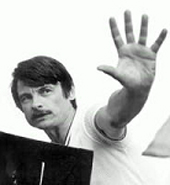
A.Tarkovsk
Clearly the hardest thing for the working artist is to create his own conception and follow it, unafraid of the strictures it imposes, however rigid these may be. It is far easier to be eclectic, to follow the routine patterns which abound in our professional arsenal.
I see it as the clearest evidence of genius when an artist follows his conception, his idea, his principle, so unswervingly that he has this truth of his constantly in his control, never letting go of it even for the sake of his own enjoyment of his work.
Black Prints as a Refrain
When we come across a refrain in poetry we return, already in possession of what we have read, to the first cause which prompted the poet to write the lines originally. The refrain brings us back to our first experience of entering that poetic world, making it immediate and at the same time reviewing it. We return, as it were, to its sources.
Art is by nature aristocratic, and naturally selective in its effect on the audience. For even in its ‘collective’ manifestations, like theatre or cinema, its effect is bound up with the intimate emotions of each person who comes into contact with a work. The more the individual is traumatised and gripped by those emotions, the more significant a place will the work have in his experience.
The aristocratic nature of art, however, does not in any way absolve the artist of his responsibility to his public and even, if you like, more broadly, to people in general. On the contrary: because of his special awareness of his time and of the world in which he lives, the artist becomes the voice of those who cannot formulate or express their view of reality. In that sense the artist is indeed vox populi. That is why he is called to serve his own talent, which means serving his people.
I cannot in fact undestand the prolem of an artist’s so-called ‘freedom’ or ‘lack of freedom’. An artist is never free. No group of people lacks freedom more. An artist is bound by his gift, his vocation.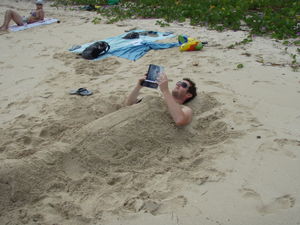
On the other hand he is at liberty to choose between realising his talent as fully as he can, or selling his soul for thirty pieces of silver. Was the frenzied search of Tolstoy, Dostoievsky and Gogol not prompted by their awareness of their vocation, or their ordained role ?
I am also convinced that no artist would work to fulfil his personal spiritual mission if he knew that no one was going to se his work. Yet at the same time, when he is working he must put a screen between himself and other people, in order to be shielded from empty, trivial topicality. For only total honesty and sincerity, compounded by the knowledge of his own responsibility towards others, can ensure the fulfilment of an artist’s creative destiny.
Black Prints Without Reason
Art affects a person’s emotions, not his reason. Its function is, as it were, to turn and loosen the human soul, making it receptive to human good. When you see a good film, look at a painting, listen to music you are disarmed and entranced from the start – but not by an idea, not by a thought. The author cannot therefore reckon on his work being understood in one particular way and according to his own perception of it. All he can do is present his own image of the world, for people to be able to look at it through his eyes, and be filled with his feelings, doubts and thoughts . .
The artist cannot make a specific aim of being understandable – it would be quite as absurd as its opposite: trying to be incomprehensible.

I have always been infuriated by the formula, ‘people won’t understand’. What does it mean ? Who can take it upon themselves to express the ‘peoples opinion’, making declarations on their own behalf as if quoting the majority of the population ? Who can know what people will or won’t understand ? What they need or what they want ? Has anyone ever conducted a survey or made the slightest conscientious effort to discover the people’s true interests, their ways of thinking, expectations, hopes – or, indeed, disappointments ?
All the artist can offer the audience is to be open and candid in his combat with his material. And the audience will appreciate what our exertions mean.
If you try to please audiences, uncritically accepting their tastes, it can only mean that you have no respect for them: that you simply want to collect their money; and instead of training the audience by giving them inspiring works of art, you are merely training the artist to ensure his own income. For their part, the audience will continue, their contentment unalloyed, to feel they are right – seldom a well-founded conviction. The failure to develop the audience’s capacity to criticise our own judgements is tantamount to treating them with total indifference. Pushkin:
You are a king. Live alone. Take a free road
And follow where your free mind leads you,
Bring to perfection the fruits of well-loved thoughts
Ask no reward for noble deeds accomplished.
Rewards are within you. Your supreme judge is yourself.
None will ever judge your work more sternly.
Discriminating artist, does it please you ?
BBBBlackBooks
A book read by a thousand different people is a thousand different books. The reader with a vivid imagination can see beyond the most laconic account, far further and more graphically than the writer himself has envisaged (in fact writers very often expect the reader to think on further). On the other hand, a reader who is restrained, inhibited by moral strictures and taboos, will see the most precise, cruel description only through the moral and aesthetic filter that has built up inside him. A kind of revision takes place within the subjective awareness, however, and this process is inherent in the relationship between writer and reader; it’s like a Trojan horse, in whose belly the writer makes his way into his reader’s soul. Hidden in it is an inescapable obligation on the reader to have a part in the authorship of the work.
If we turn to painting we find there is always a distance between the picture and the viewer, a distance that has been marked out in advance and which makes for a certain reverence towards what is depicted, for an awareness that what is in front of the beholder-whether he finds it comprehensible or not- is an image of reality: it would never occur to anyone to identify a picture with life.
I cannot imagine my life being so free that I could do what I wanted; I have to do what sems most important and necessary at any given stage. And it’s only possible to communicate with the audience if one ignores that eighty percent of people who for some reason have got it into their heads that we are supposed to entertain them. At the same time we have ceased to respect that eighty percent to such an extent that we are prepared to entertain them, because we depend on them for money and for our next production. A grim look-out !

Van Gogh, who declared that ‘duty is something absolute’, would never have thought of trying to please anyone in particular or make anyone like him. He took his work far too seriously, fully aware of its social import; and saw his task as an artist as ‘fighting’ with all his strength, to the last breath, with the material of life, in order to express that ideal truth which lies hidden within it.He wrote in his diary:
When a man expresses clearly what he wants to say, is that strictly speaking not enough ?When he is able to to express his thoughts beautifully, I won’t argue that it’s more pleasant to listen to him; but it doesn’t add much to the beauty of truth, which is beautiful in itself.
Results
Art symbolises the meaning of our existence. As for the results, we answer not for them but for choosing to fulfil or not to fulfil our duty. Such a starting-point lays on the artist the obligation to answer for his own fate. My own future is a cup that will not pass me by – consequently it must be drunk.
I believe that it is always through spiritual crisis that healing occurs. A spiritual crisis is an attempt to find oneself, to acquire new faith. It is the apportioned lot of everyone whose objectives are on the spiritual plane. And how could it be otherwise when the soul yearns for harmony, and life is full of discordance. This dichotomy is the stimulus for movement, the source at once of our pain and of our hope; confirmation of our spiritual depths and potential.

It occured to me that excessive formal simplification could run the risk of appearing precious or mannered. In order to avoid that I tried to eliminate all touches of vagueness and inuendo, those elements that are regarded as the marks of ‘poetic atmosphere’. That sort of atmosphere is always painstakingly built up; I was convinced of the validity of the opposite approach-I must not concern myself with atmosphere at all, for it is something that emerges from the central idea, from the author’s realisation of his conception. And the more precisely the central idea is formulated, the more clearly the meaning of the action is defined for me, the more significant will be the atmosphere that is generated around it. Everything will begin to reverberate in response to the dominant note: things, landscapes, actors’ intentions. it will all become interconnected and necessary. One thing will be echoed by another in a kind of general interchange: and an atmosphere will come into being as a result of this concentration on what is most important.
Finally, I would enjoin the reader – confiding in him utterly – to believe that the one thing that mankind has ever created in a spirit of self-surrender is the artistic image. Perhaps the meaning of all human activity lies in artistic consciousness, in the pointless and selfless creative act ? Perhaps our capacity to create is evidence that we ourselves were created in the image and likeness of God ?

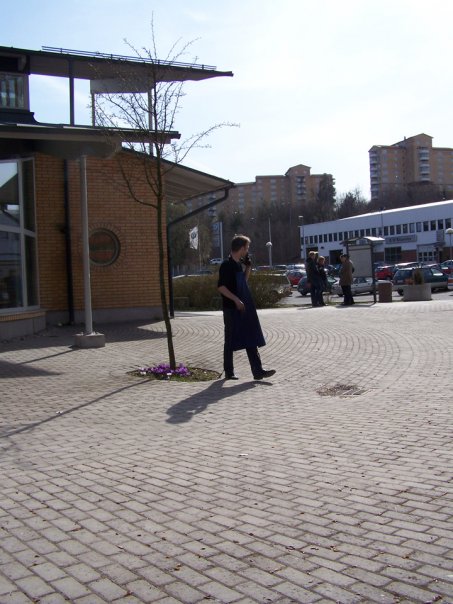
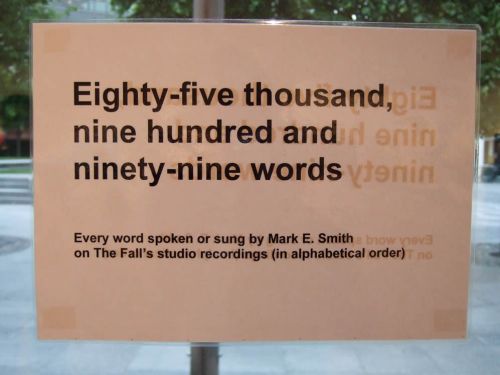
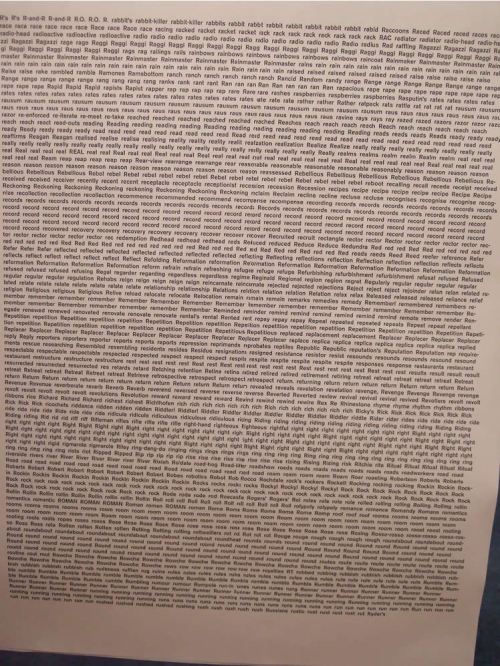


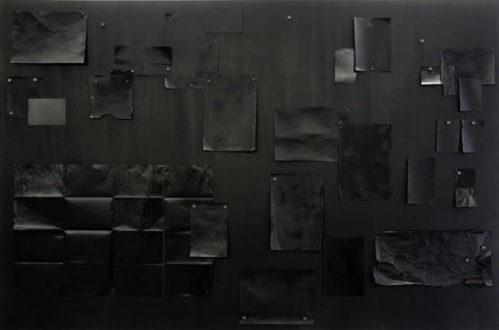


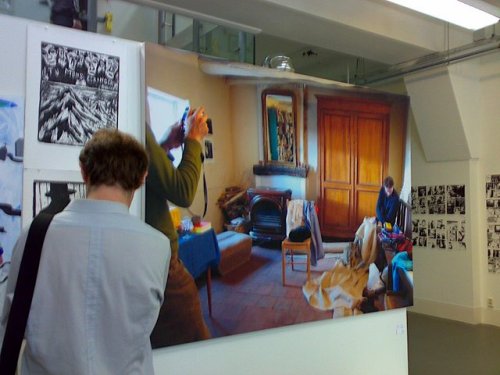
 During the process of
During the process of  It worked best with this one. Op A photographing Op O photographing Op M sewing the body of the horse. The still and careful cats, the wooden chair, the mirror, the natural light from the window shining onto the stone floor of an old house suggested a composition by Vermeer.
It worked best with this one. Op A photographing Op O photographing Op M sewing the body of the horse. The still and careful cats, the wooden chair, the mirror, the natural light from the window shining onto the stone floor of an old house suggested a composition by Vermeer.
 Captured on CCTV Camera entering a cinema in Sunderland, England.
Captured on CCTV Camera entering a cinema in Sunderland, England.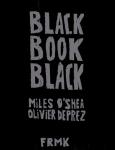

 At this late hour of the world’s history books are to be found in every room of the house – in the nursery, in the drawing room, in the dining room, in the kitchen. And in some houses they have collected so that they have to be accommodated with a room of their own. Novels, poems, histories, memoirs, valuable books in leather, cheap books in paper – one stops sometimes before them and asks in a transient amazement what is the pleasure I get, or the good I create, from passing my eyes up and down these innumerable lines of print? Reading is a very complex art – the hastiest examination of our sensations as a reader will show us that much. And our duties as readers are many and various. But perhaps it may be said that our first duty to a book is that one should read it for the first time as if one were writing it.
At this late hour of the world’s history books are to be found in every room of the house – in the nursery, in the drawing room, in the dining room, in the kitchen. And in some houses they have collected so that they have to be accommodated with a room of their own. Novels, poems, histories, memoirs, valuable books in leather, cheap books in paper – one stops sometimes before them and asks in a transient amazement what is the pleasure I get, or the good I create, from passing my eyes up and down these innumerable lines of print? Reading is a very complex art – the hastiest examination of our sensations as a reader will show us that much. And our duties as readers are many and various. But perhaps it may be said that our first duty to a book is that one should read it for the first time as if one were writing it.
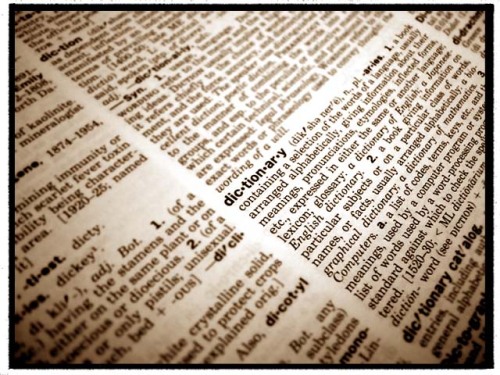
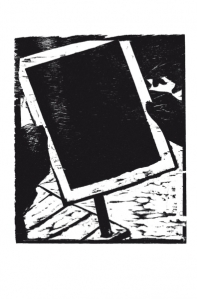
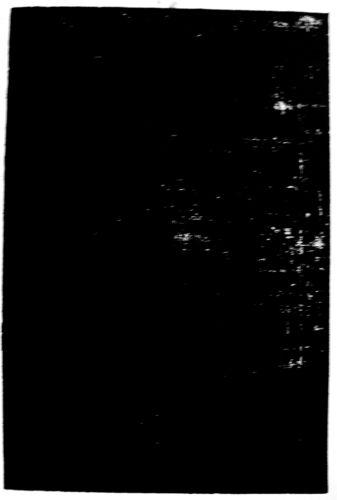
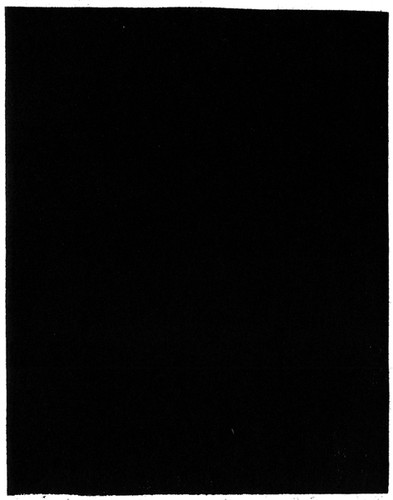

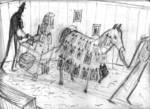
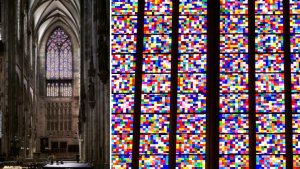

 Malgré une forme graphique décevante, Nouvelles Impressions d’Afrique édité chez Léo Scherr est associé à une réflexion théorique très éclairante sur l’œuvre de R. Roussel. Jacques Sivan, concepteur de cette édition et auteur de la postface, met en lumière le processus d’écriture de R. Roussel et sa conception du livre.
Malgré une forme graphique décevante, Nouvelles Impressions d’Afrique édité chez Léo Scherr est associé à une réflexion théorique très éclairante sur l’œuvre de R. Roussel. Jacques Sivan, concepteur de cette édition et auteur de la postface, met en lumière le processus d’écriture de R. Roussel et sa conception du livre.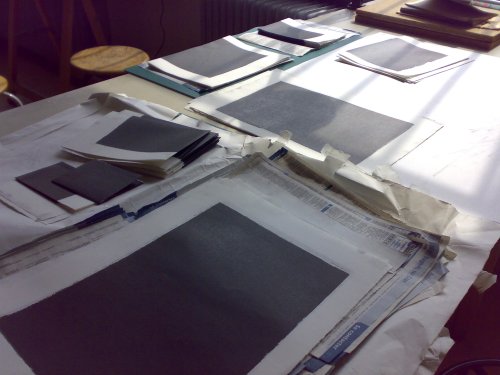













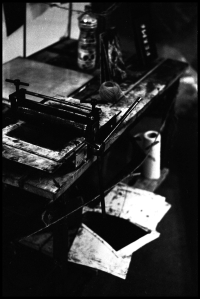









You must be logged in to post a comment.